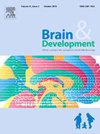伴侣疗法:稳定和增强内源性和外源性溶酶体酶。
IF 1.3
4区 医学
Q4 CLINICAL NEUROLOGY
引用次数: 0
摘要
伴侣疗法是针对蛋白质错误折叠疾病,尤其是溶酶体疾病的分子治疗方法的新概念。最初,我们开始对法布里病和 GM1-神经节苷脂病患者的培养细胞、模型动物和患者进行分子分析。一些突变酶蛋白由于在体细胞中分子结构不稳定而无法表达催化活性。小分子化合物(伴侣素)可以纠正不稳定突变蛋白的错误折叠,从而恢复酶的活性(伴侣素疗法)。首先在内源性突变酶中研究了这一病理分子事件。然后,在伴侣蛋白和用于庞贝氏症酶替代疗法(ERT)的外源蛋白之间发现了类似的分子相互作用。这种新的合子-酶替代组合疗法将成为另一种有用的技术,从而将合子疗法的应用范围扩大到多种溶酶体疾病。因此,伴侣蛋白疗法有望在未来用于稳定和增强外源性提供的 ERT 酶以及内源性突变酶。本文章由计算机程序翻译,如有差异,请以英文原文为准。
Chaperone therapy: Stabilization and enhancement of endogenous and exogenous lysosomal enzymes
Chaperone therapy is a new concept of molecular therapeutic approach to protein misfolding diseases, particularly to lysosomal diseases. Initially we started molecular analysis of culture cells, model animals and patients with Fabry disease and GM1-gangliosidosis. Some mutant enzyme proteins did not express the catalytic activity because of unstable molecular structure in somatic cells. The small molecule compound (chaperone) corrected misfolding of the unstable mutant protein, resulting in restoration of the enzyme activity (chaperone therapy). This pathological molecular event was studied first in endogenous mutant enzymes. Then a similar molecular interaction was found between the chaperone and the exogenous protein supplied for enzyme replacement therapy (ERT) in Pompe disease. This new chaperone-ERT combination therapy will become another useful technology in order to expand the application of chaperone therapy to a wide range of lysosomal diseases. Thus, chaperone therapy is expected in future for stabilization and enhancement of exogenously supplied ERT enzymes as well as endogenous mutant enzymes.
求助全文
通过发布文献求助,成功后即可免费获取论文全文。
去求助
来源期刊

Brain & Development
医学-临床神经学
CiteScore
3.60
自引率
0.00%
发文量
153
审稿时长
50 days
期刊介绍:
Brain and Development (ISSN 0387-7604) is the Official Journal of the Japanese Society of Child Neurology, and is aimed to promote clinical child neurology and developmental neuroscience.
The journal is devoted to publishing Review Articles, Full Length Original Papers, Case Reports and Letters to the Editor in the field of Child Neurology and related sciences. Proceedings of meetings, and professional announcements will be published at the Editor''s discretion. Letters concerning articles published in Brain and Development and other relevant issues are also welcome.
 求助内容:
求助内容: 应助结果提醒方式:
应助结果提醒方式:


